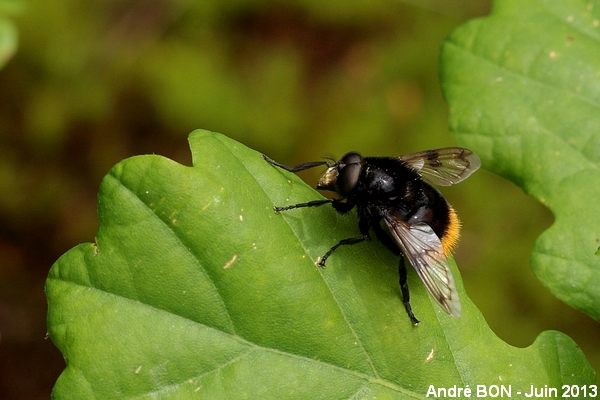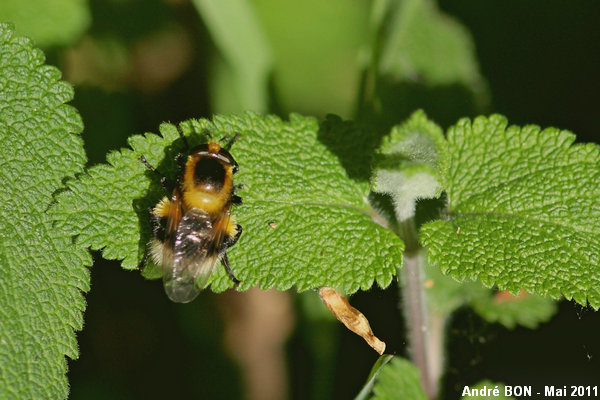

| Volucella bombylans (Linnaeus, 1758) |


|
|
Scientific name: Volucella bombylans (Linnaeus, 1758) Common name: French name: Volucelle bourdon Order: Diptera Family: Syrphidae Wingspan : 11-17 mm. Biotope: Woodland edges, clearings, waste lands, parks and gardens. Geographic area: Europe, Near-East, North America. Observation period : Two broods per year, between May and September, with a peak in June. |
Volucella bombylans is a large hoverfly which, as you can guess from its scientific name, mimics Bumblebees. The forehead is reddish yellow. The thorax is black with an important pubescence which is variable in colour, black, yellow or orange, and is more visible on the sides. The rather long antennae are feathery. The large eyes are touching on males and are separated on females. The wings show a large dark median mark. The legs are black. There are several variations of the colour of the abdomen mimicking different species of Bumblebees. The bombylans form with a reddish orange abdomen tip mimics the Red-tailed Bumblebee (Bombus lapidarius). The plumata form with a white abdomen tip mimics the White-tailed Bumblebee (Bombus lucorum) and the Buff-tailed Bumblebee (Bombus terrestris). The larvae grow inside the nests of Wasps and Bumblebees, where they feed on detritus, dead insects and sometimes larvae. The Narcissus Bulb Fly (Merodon equestris) does not show feathery antennae. The median vein of the wing shows a U-shaped curve while it is rather straight on Volucella bombylans. Eristalis intricaria has not completely black legs. The fore half of the tibiae is white. |
| [To know more about the Volucella bombylans] [Next picture] [Top] |

|
Here is one hoverfly of the bombylans form, with an orange yellow abdomen tip. The touching eyes indicate one male. |
| [To know more about the Volucella bombylans] [Previous picture] [Top] |

|
Here is one hoverfly of the plumata form, with a white abdomen tip. The separated eyes indicate one female. |